The Beauty of Green Tea
Green tea is made from the Camellia Sinesnsis leaves, like oolong and black teas but the leaves have not undergone the same withering and oxidation process that is used to make other teas. There are several varieties of green tea which are based on growing conditions, production processes and time of harvest.
Growing conditions can be broken down to two main types - those grown in the sun and those grown in the shade. Green tea plants are harvested around three times a year and are grown in rows and are pruned to harvest shoots in the standard way. The first flush being in early May, the second harvest in June/July and third picking in early August.
All types of tea, even the regular builder’s cup, come from the Camellia Sinensis plant. Green tea gets its name from the emerald green colour created when brewing unprocessed, unfermented tea leaves. Green tea’s origin goes back as far as 5,000 years and is commonly drunk and widely grown in the Far East where the health properties are well regarded. Green tea originated in China, but its production and manufacture has spread too many other countries.
Green tea does contain caffeine but compared to an equal amount of coffee it is far less, but it can still act as a stimulant. Because tea acts as a brain stimulant some people find that drinking green tea increases energy levels, concentration and mood.
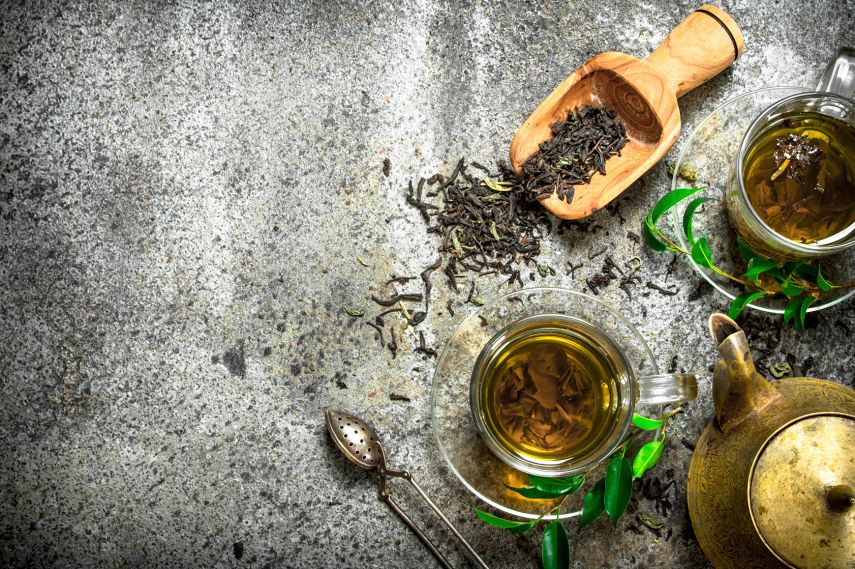
CHINESE GREEN TEA
China is the world’s largest exporter of green tea producing 80% of the world’s supply. It originated here five thousand years ago. One legend tells the story of a Chinese emperor called Shen Nung, who had a routine of boiling water before drinking it. He first tasted green tea after a tea blossom fell into his cup of hot water by accident. He was so pleased with its taste that he ordered that the small tea trees should be planted in the palace’s gardens establishing a tradition of tea drinking at the Chinese royal court.
After being discovered, the tea leaves undoubtedly became a custom. The Chinese learned and understood green tea’s health benefits. Tea was introduced to the West in 1606. The very first shipment of tea to Europe was actually green tea. Tea became popular in England really late during Queen Victoria’s reign in the 1800′s.
Loose leaf green tea has been the most popular form of tea in China for a long time. Chinese green tea was originally steamed but nowadays it is mainly pan fried in a dry wok. Other processes in China include oven –firing, basket-firing and sun drying. Chinese green tea leaves are processed by hand and can be sculpted into many shapes, such as balls and spirals. This adds variety to the tea drinking experience.
Our Recommendations:
1. Green Keemun Congou - £4.60 for a 100g bag
A lovely, delicious ‘beginners’ Chinese green tea from the South Province of Anhui. This tea has a beautifully balanced, rounded and aromatic flavour.
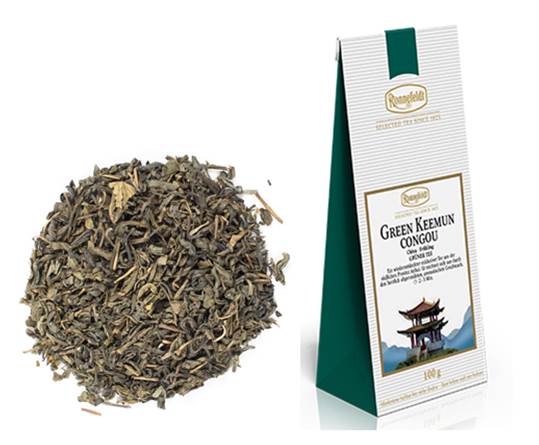
2. Joy of Tea Green Dragon Lung Ching - £6.95 for 15 tea bags
A rare, mild and mellow tea from Zhejiang Province. The leaf bud and leaves are carefully dried and pressed by hand so the shoots stay rolled and only unfold when the tea is brewed. These tea bags have an innovative design, the large tea filter bag provides all the space for the delicious tea to unfurl and deliver flavour as well as having a special clip to hold the tea bag in place on your cup whilst your tea is brewing.
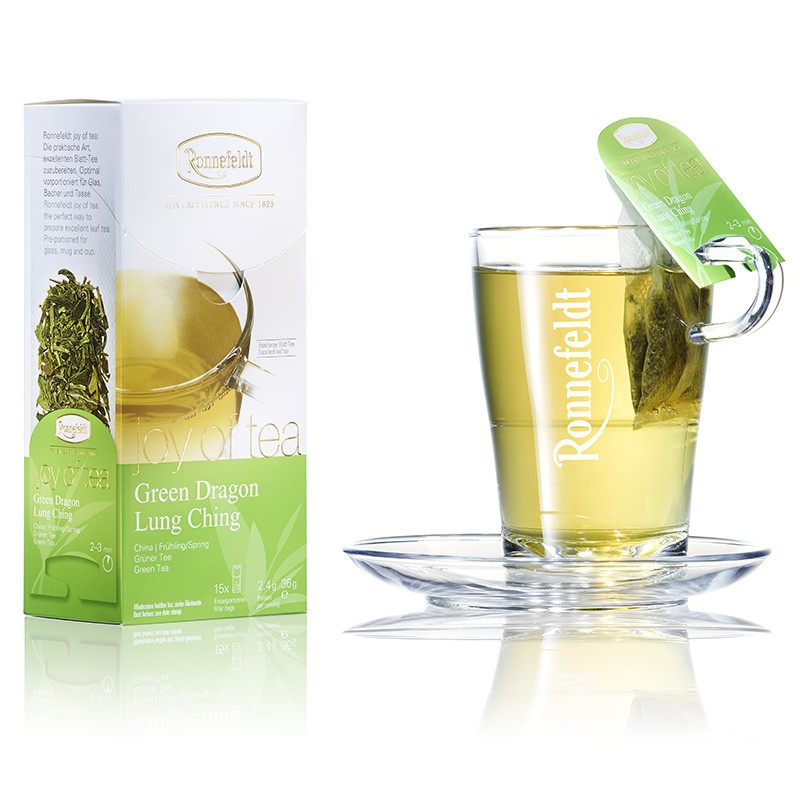
3. Green Oasis Organic - £5.40 for a 100g bag
A superb green tea with a hint of spearmint. This tea has small pellet size leaves rolled into balls belended with aromatic, invigorating spearmint – a truly refreshing drink.
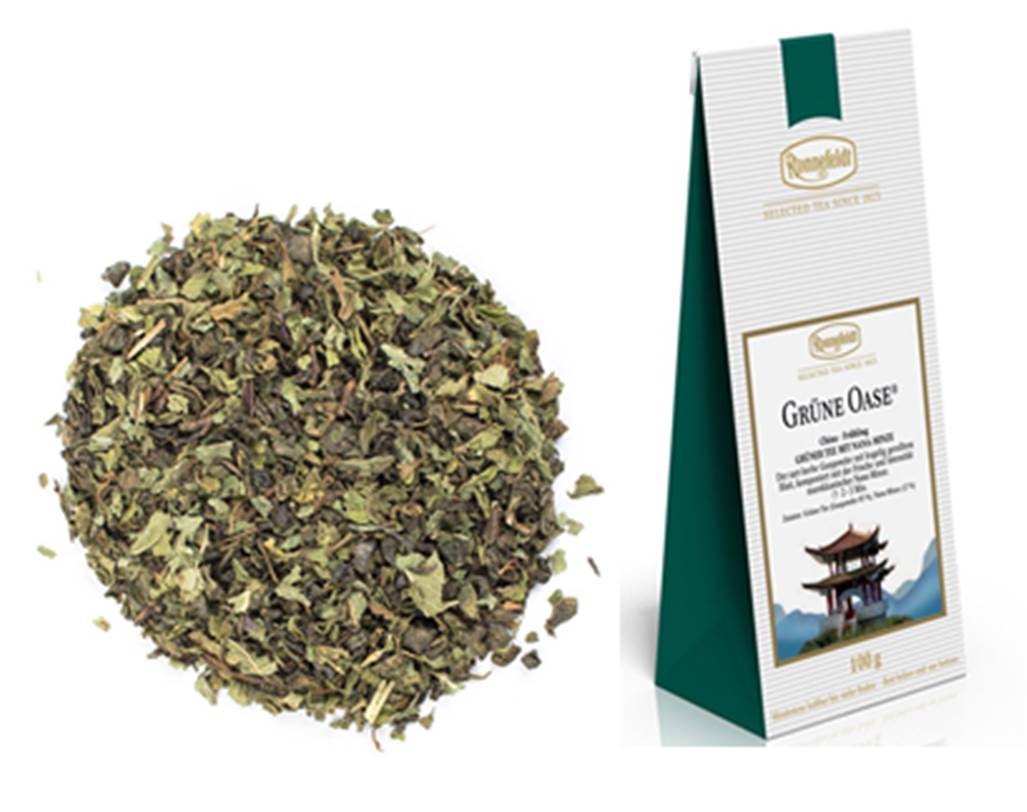
JAPANESE GREEN TEA
The history of green tea in Japan originated in 805 when Buddhist monks returned back to Japan from travelling in China bringing back young tea trees. In the 12th century, tea seeds were again bought over by the famous Zen priest Eisai. Eisai was interested in the positive health effects tea had on the mind and body. As an influential figure the custom of tea drinking became wide spread around Japan. Green tea soon became a staple drink in Japan and people soon integrated it into their culture. The Japanese turned the drinking of green tea into a formal occasion. Drinking green tea moved from merely a personal and social activity to a ceremonial one.
Japan is a big tea producer, generating 7% of the world’s supply. The majority of this is consumed within Japan (around 95%) and only a small portion (around 5%) is exported to other countries. Nearly all commercial tea produced today in Japan is green tea.
The culture surrounding the harvest and preparation of these tea leaves is complex and rooted deep in tradition. Japanese tea production is heavily mechanized, and is characterised by the use of modern technology and processes to increase harvests and reduce labour. Machine picked leaves do not result in the same high quality tea as those picked by hand. When leaves are hand-picked, usually in small family farms the best quality Japanese green tea leaves are picked, creating slight differences in flavour that a tea connoisseur can appreciate. It is best for the leaves to be picked when there are 3-5 sprouts and leaves are exactly the right size. One day can make a difference and result in bitter leaves so tea needs to be picked at the right time and quickly. Japanese green teas have a thin needle like shape and are a dark green colour.
Japanese tea leaves are grown in many different areas so there is less emphasis on the environment the leaves are grown in. There is a limited quantity of tea that can be produced in Japan so the majority of tea making is dedicated to the premium tea market.
Most teas are produced by steaming rather than pan-firing. This process gives the teas a sweeter more grassy flavour. A mechanical drying process then dries the leaves into their final shape.
Japanese green tea leaves are not fermented when processed and therefore do not contain this subtle, additional flavour. Instead Japanese green tea tends to taste sweeter than Chinese green tea.
Sencha is a very popular Japanese green tea. Its leaves are first steamed and then shaped. Sencha tea produces a clear yellow/green tea with a sweet, grassy but slightly sharp flavour.
Our Recommendations:
1. High Tea Co green Tea £9.95 for 125g tin
A grassy, fresh and very slightly tart green tea beautifully packaged in a 125g reusable tea caddy. A lovely refreshing cup of green tea!
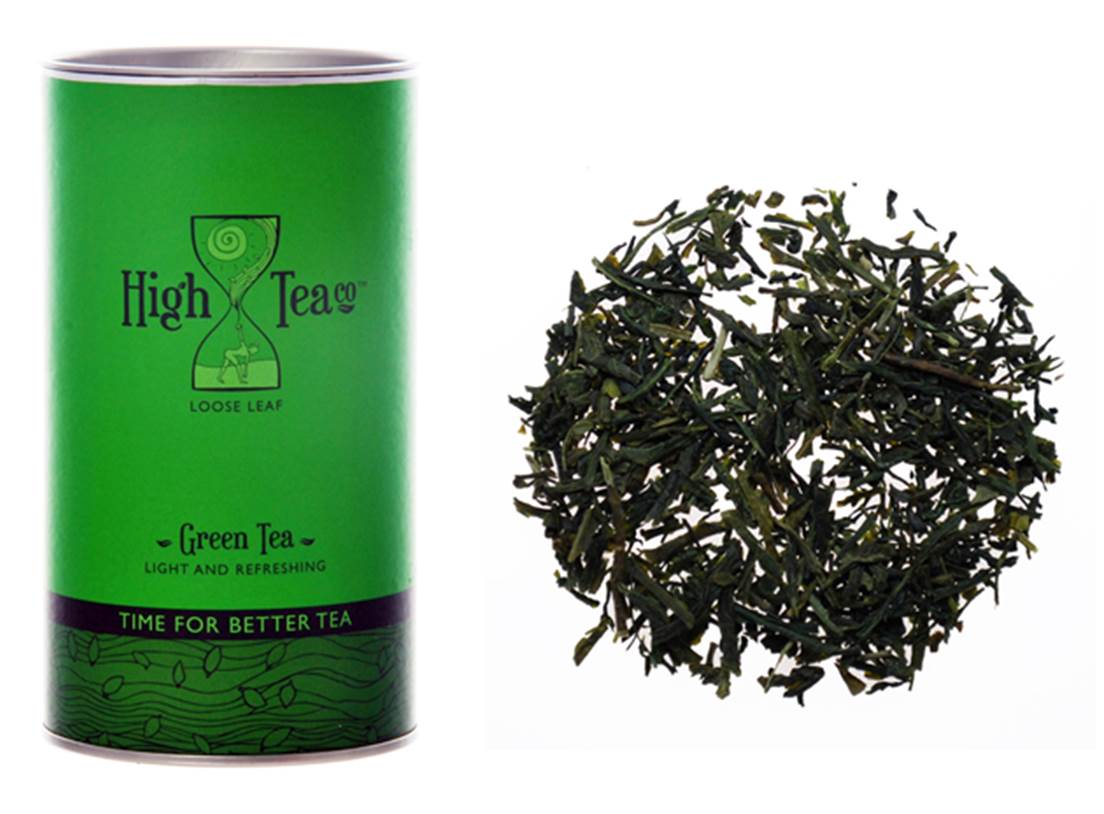
2. Fancy Sencha Organic £7.30 for a 100g bag
A favourite green tea here at the Cup of Tea office, a delicatley leafed Sencha; light green in the cup with a gentle breath of sweetness. Certified Organic.
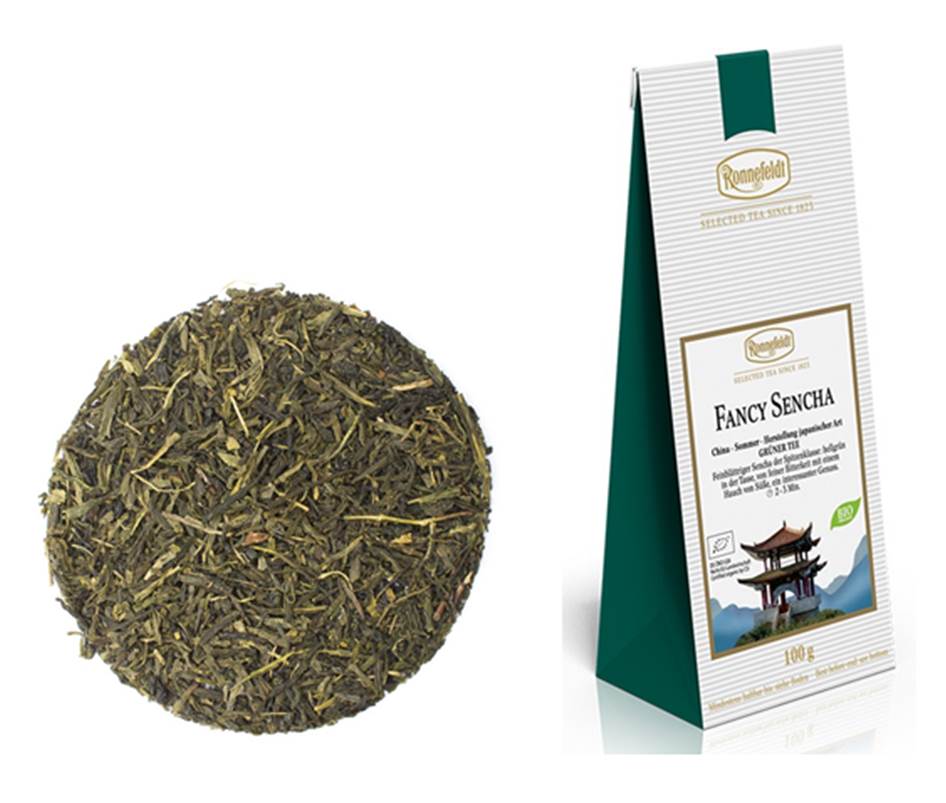
3. Bancha Organic £5.50 for a 100g bag
A refreshing tea with typical Japanese character. This tea is freshly tart, tangy and mildly grassy. It is made from larger leaves containing very little caffeine. Bancha is well knows in Japan as the everyday cup of tea. Certified Organic.
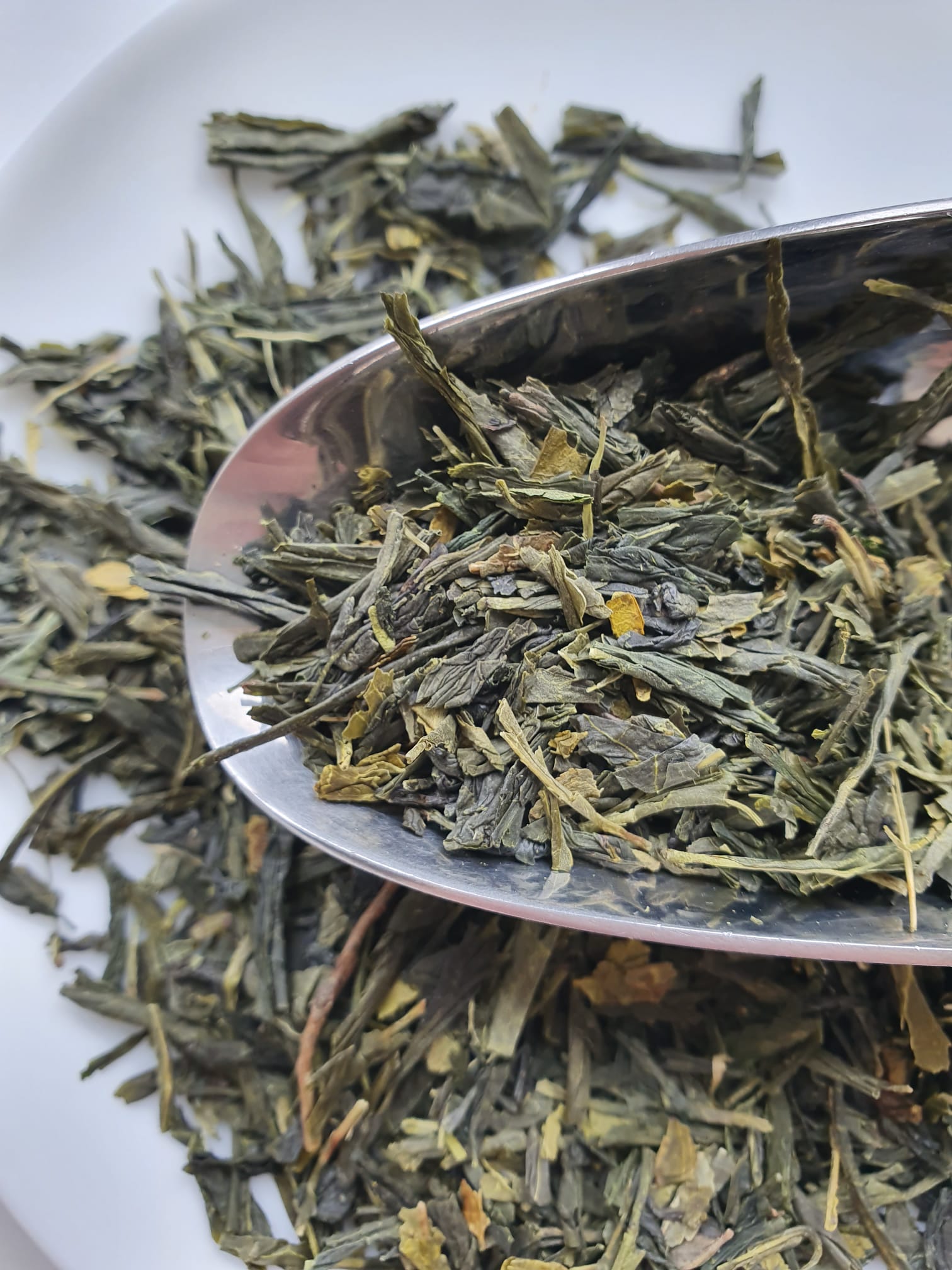
MATCHA TEA
Matcha, the tea of teas - this fine, green powder is used for the traditional preparation of the Japanese Tea Ceremony. The tea ceremony is an important part of Japanese culture with its roots in Zen Buddhism.
Matcha is made from green tea leaves grown in the shade. The leaves then have a higher chlorophyll content which makes them a vibrant green colour. The process of making matcha is where the entire leaf is ground to a powder. This powder is then mixed with boiling water and gently whisked before being served. The flavour of matcha is light and sweet and can sometimes be added to desserts and sweet drinks.
How to make Match Tea:
Add 1g (about half a level teaspoon) of Matcha powder in a warmed bowl
Add freshly pre-boiled water ideally at 80c - 90c
Froth using a bamboo whisk for around 15 seconds.
Once foam appears on the surface, the tea is ready for drinking.
Our Recommendation:
1. Matcha Midori Organic - £26.50 for a 30g tin
A mild and fruity matcha. This tea is gentle, delicately tart, sweet and very digestible. A delightful experience for any matcha lover!
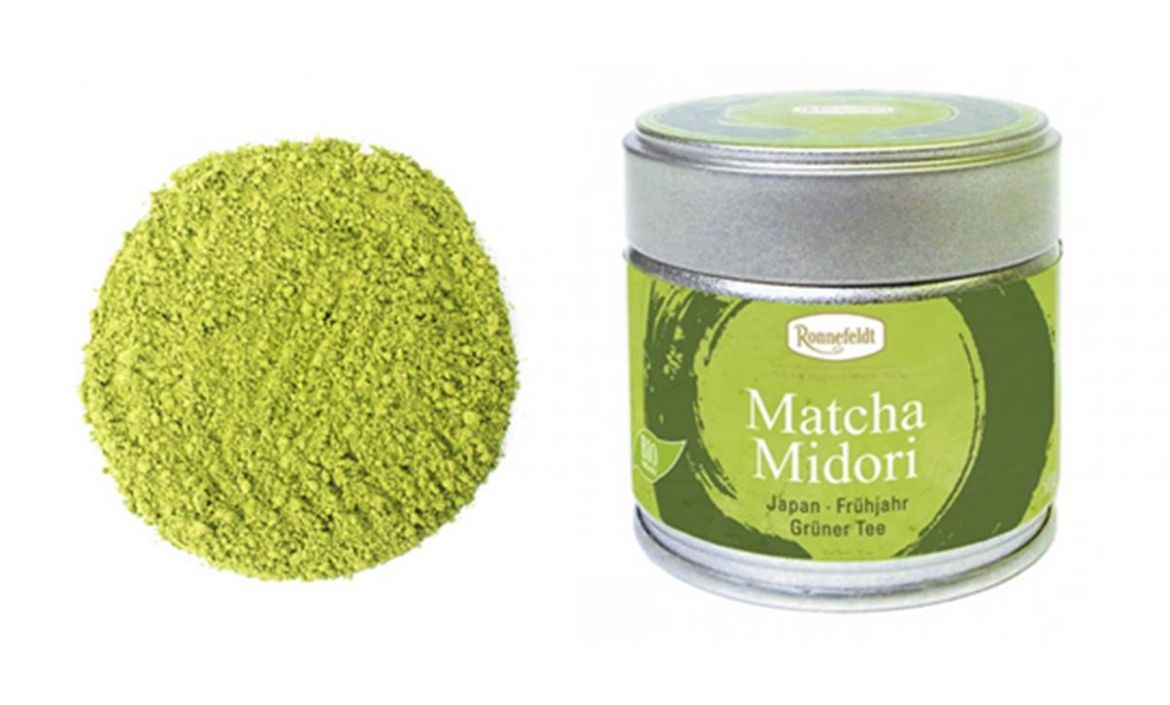
HOW TO BREW GREEN TEA
Whether you want to use the loose leaves or try a tea bag infusion, the standard process is the same.
Boil some freshly poured cold water
Place the tea leaves in a tea strainer
Pour the hot water over the leaves
Steep the tea for the appropriate amount of time
Strain the tea
Add a dash of milk to taste, sweeten if required
Sit back and enjoy!
-
Posted by cup of tea admin
9th February 2018












 EARN POINTS WITH OUR LOYALTY SCHEME
EARN POINTS WITH OUR LOYALTY SCHEME